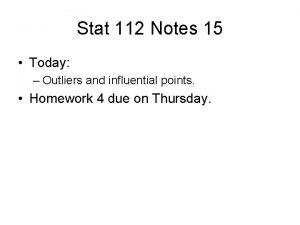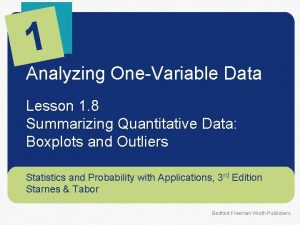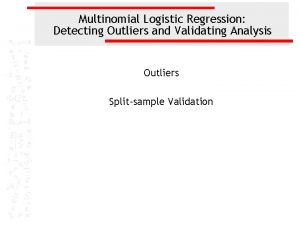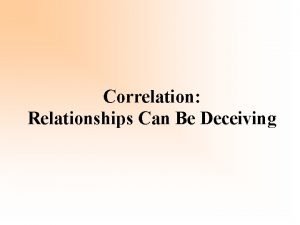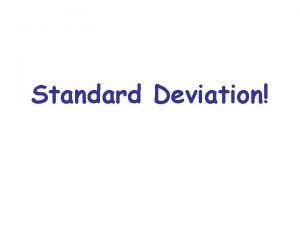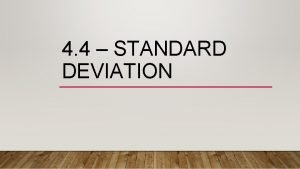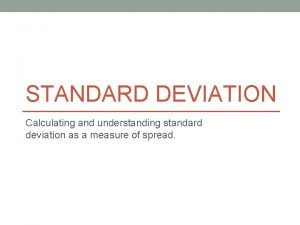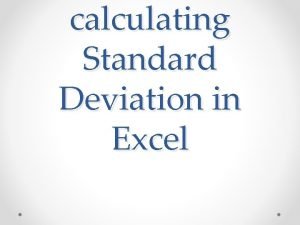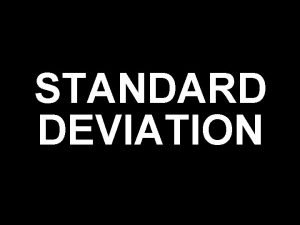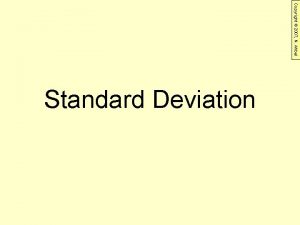STANDARD DEVIATION AND OUTLIERS What is standard deviation










- Slides: 10

STANDARD DEVIATION AND OUTLIERS

What is standard deviation? ◦ Average distance away from the center of the data

Steps for finding standard deviation ◦ Find the mean of the data ◦ Find the deviation of each number from the mean ◦ Square all the deviations ◦ Add all the squares of the deviations and divide by 1 less than the number of deviations ◦ Take the square root of this number

Example 1 ◦ find the standard deviation for: 1, 3, 4, 6, 9, 19 Mean: 7 Deviations: 1 -7=-6, 3 -7=-4, 4 -7=-3, 6 -7=-1, 9 -7=2, 19 -7=12 Square Deviations: 36, 16, 9, 1, 4, 144 Add and Divide: 210/5=42 Square Root: sqr 42=6. 48

Example 2 ◦ find the standard deviation for: 10, 15, 19, 35, 27, 44 12. 85

What is an outlier? ◦ A number in your data that is very different (far away) from your other values

Method 1: Standard Deviation ◦ Find your standard deviation. ◦ Your outliers will be found by multiplying your standard deviation by 1. 5. ◦ Compare to the mean. ◦ Anything above or below the mean by 1. 5 times the standard deviation is an outlier.

Example 3: ◦ Find the outliers in the data set. 164, 175, 126, 135, 159, 143, 155 SD: 17. 2 Mean: 151+17. 2*1. 5=176. 8 151 -17. 2*1. 5=125. 2 ◦ No outliers

Method 2: Interquartile Range ◦ Find your IQR ◦ Your outliers will be found by multiplying the IQR by 1. 5. ◦ Compare to Q 1 and Q 3. ◦ Anything below Q 1 by 1. 5 times the IQR or anything above Q 3 by 1. 5 times the IQR is your outlier.

Example 4: ◦ Find the outliers in the data set. 25, 29, 3, 32, 85, 33, 27, 28 IQR: 6. 5 Q 1: 26 Q 3: 32. 5+6. 5*1. 5=42. 25 26 -6. 5*1. 5=16. 25 ◦ 3 and 85


